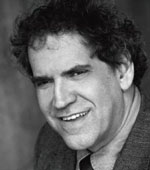The Rosenberg Holocaust Siddur: Program Material Preserving the Memory of the Holocaust by Rabbi Dr. Bernhard H. Rosenberg; CreateSpace, 2020; 116 pages paperback, $9,
By Rabbi Dr. Michael Leo Samuel

CHULA VISTA, California — This is the second book Rabbi Rosenberg asked me to review; the first much longer book was The Rosenberg English Holocaust Haggadah For Passover: Holocaust Poems and Essays to Supplement the Seder 1st Edition, which appeared Dec. 8, 2020.
Despite having an entire tractate discussing the minutia of Jewish prayer in the daily spiritual life of the people, it is surprising—perhaps astounding—the first siddur did not come into existence until the ninth century, over 900 years since the Sages conducted their deliberations about Jewish prayer!
The name Siddur means “order” and it is a direct cousin to the familiar Passover Seder. And the similarities in their names is not coincidental. The Siddur prescribes the basic prayers that govern the spiritual daily life of the Jew. The Siddur follows a natural progression, beginning with the prayers one recites upon waking up in the morning and rediscovering the rays of dawn.
The Sages realized that most people might not be able to spontaneously pray to God like the biblical personalities did in the Torah. Nevertheless, they created a structure that has a linear progression, leading to the contemplation of nature (Pisukei d’Zimara), then taking the person on a contemplative journey leading to the Shema, and finally to the Amida (the Shemoneh Esre).
Sometimes, Jewish scholars tend to become stodgy and two-dimensional in their worship. As you see, it took rabbinical scholars nearly 900 years to finally compose a Siddur.
Siddur on the Holocaust?
Fortunately, it did not take 900 years to debate or come up with a finished product. Yet, it is amazing few, if any, people came up with this novel idea—but to the credit of my friend and colleague Rabbi Dr. Bernhard H. Rosenberg, he recently published, The Rosenberg Holocaust Siddur: Program Material Preserving the Memory of the Holocaust. This new groundbreaking work helps a generation of Jews, many of whom have felt incapable of expressing prayer when speaking about the evils and horrors of the Holocaust. At last, somebody has come up with a way to help survivors, the children of survivors, and ordinary thoughtful people who have felt as if they were wandering in the wilderness of silence.
Here are a couple of examples of some of the moving poetical selections that the author wrote, and others that he cited, many from many survivors and those who perished in the death camps.
A simple sort of man he builds walls
wraps his nights
round the nape of his neck
A dark lodging
trickles and tracks
tick-tack beats
to time counting sorrow.
Scars stretch thoughts ache
shame stumps the soul
one leg over the other
crossing unmarked holes
He peels his empty
over and over
who needs me?
who needs me not?
He hoards his fears
schemes trade with dreams
no one hears him say
Survival is a spectacle.
When the reader encounters these words, one can suddenly feel what it was like to be a survivor who lived long enough to re-tell the story.
Rabbi Rosenberg reminds us that we are a people who love stories. To tell a story is to create a world, adopt an attitude, and suggest a behavior… We are born into a community of stories and storytellers. In interpreting our stories about the Holocaust, we find out who we are and what we must do, and why we must never forget. In telling and hearing the stories of the survivors, we ourselves are told, as we work to preserve these memories for the future generations.
The Rosenberg Siddur has other familiar pieces anyone planning a Holocaust Memorial Service will definitely want to include:
Dona,
On a wagon bound and helpless
Lies a calf, who is doomed to die.
High above him flies a swallow
Soaring gaily through the sky.
Chorus:
The wind laughs in the cornfield
Laughs with all his might
Laughs and laughs the whole day through
And half way through the night
Dona, dona, dona…
Now the calf is softly crying
“Tell me wind, why do you laugh?”
Why can’t I fly like the swallow
Why did I have to be a calf,
Chorus
Calves are born and soon are slaughtered
With no hope of being saved.
Only those with wing like swallow
Will not ever be enslaved.
Chorus
The Rosenberg Siddur also features the Partisan Song better known to Holocaust survivors as Zog Nit Keyn mol:
| Yiddish in transliteration
Zog nit keyn mol, az du geyst dem letstn veg, Fun grinem palmenland biz vaysn land fun shney, S’vet di morgnzun bagildn undz dem haynt, Dos lid geshribn iz mit blut, un nit mit blay, To zog nit keyn mol, az du geyst dem letstn veg, |
English translation
Never say that you’re going your last way From green lands of palm to lands with white snow Today the morning sun will accompany us This song is written with blood and not with [pencil] lead So never say that you’re going your last way |
There is much to be said about this short but very meaningful book. This is the kind of book parents can share reading with their families.
Rabbis, priests, ministers, and imams, and all people of faith will find the Rosenberg Siddur a delight, one masterfully crafted by a wonder rabbi and spiritual teacher.
*
Rabbi Dr. Michael Leo Samuel is spiritual leader of Temple Beth Shalom in Chula Vista. He may be contacted via michael.samuel@sdjewishworld.com